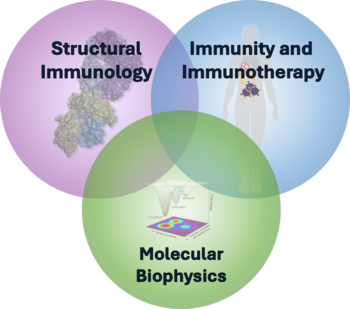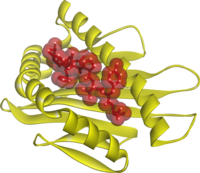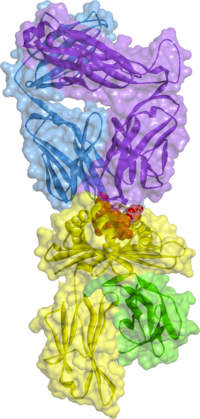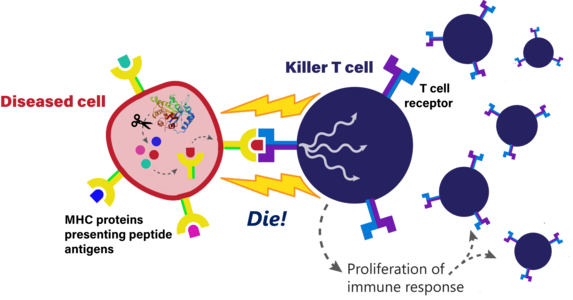Research Overview

Research in the Baker lab is directed at understanding and manipulating molecular recognition in the immune system. Our work emphasizes fundamental biochemical, biophysical, and structural principles, which we apply to study immune recognition. We often take inspiration from allied fields such as protein folding and biomolecular assembly, adapting knowledge and insights from these seemingly (but not really) distant fields to understand the complexity of the immune system. Structural biology - or structural immunology as it is now termed - is central to our work, as nearly all projects in the lab generate new structures or interpret data in the context of known three dimensional structures. As understanding of the immune system has grown, our interests have expanded into understanding the principles that underlie normal and abnormal immune function as well as therapeutic approaches based on immune recognition.
Our work in immune recognition also allows us to study fundmental yet intricate biochemical mechanisms that are common throughout biology, such as how specificity is achieved, how proteins communicate across distances, and how complex molecular environments tune function - a remarkable opportunity to translate from biochemistry and biophyics to immunology and then back again.

Most cells in the body express major histocompatibility complex proteins (MHC) proteins, which bind and “present” peptides derived from intracellular or extracellular proteins. Recognition of a peptide/MHC complex by a T cell receptor (TCR) on the surface of a T cell stimulates a T cell-mediated immune response. While best recognized for its role in the immune response to pathogens such as viruses, T cell mediated immunity also plays a key role in transplant rejection, autoimmunity, and cancer.

Many projects in the lab are centered on the basic structural, biophysical, and immunological principles of TCR recognition of peptide/MHC complexes. The TCR-peptide/MHC interaction is one of the most complex protein-ligand interactions in biology. We aim to understand the complexities from a physical perspective, relying not only on structural biology, but also experimental and computational biochemistry, modeling and simulation, molecular immunology, and a growing amount of machine learning and data science.
As we gain insight into how T cells and TCRs recognize targets, we are using this knowledge to engineer immune receptors and cells with improved recognition properties, with the long term goal of improving immunological therapeutics. Related to this is the development of peptid-based therapeutic and preventative vaccines. Other work is centered on understanding how recognition signals are communicated across cell membranes. Here, we aim to gain a deeper understanding of the molecular changes that occur upon receptor binding and how these influence protein architecture, protein motion, and the connectivity with cell signaling units.

We have a special interest in the immune response to cancer. There is a close connection between cellular immunity and cancer: some of the earliest cancer treatments of the modern era focused on eliciting or enhancing anti-cancer immune responses, and the last several years have seen rapid growth in cancer immunotherapy. We study the development and enhancement of personalized cancer vaccines as well as sophisticated approaches that involve the creation of genetically engineered immune systems for cancer patients. In these areas, we leverage our understanding of the structural and biophysical underpinnings of immune recognition to help advance cancer immunotherapy.
The Baker lab does not work with human subjects or clinical samples, nor do we perform in vivo experiments, although we have collaborations with translational laboratories who do so through experiments with animal models or clincal trials.
Visit the Baker lab Structural Immunology Hall of Fame at the PDB